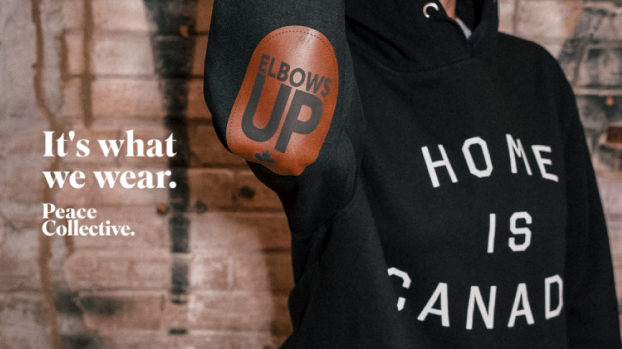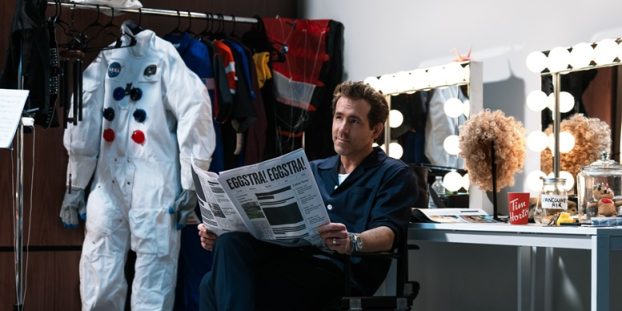It’s that time again. We’re rolling out our 2016 Brands of the Year, so make sure to check back during this week as we take a look at the brands that had a big impact on Canada this year.
This article appears in the October 2016 issue of strategy.
Gastronomes, for the most part, do not plan their Friday night meals around the multiplex.
But behind the four walls of the Rec Room, a new entertainment space owned and operated by Canada’s largest exhibition chain, you’ll be able to order more than just Nibs and Twix Bites. There, you’ll find wine on tap, and a menu boasting edibles like Applewood smoked bacon maple jam with double-cream brie, and steak frites marinated in a béarnaise and cabernet wine sauce.
The 56,000-square-foot Rec Room in Alberta is similar to the Dave & Buster’s franchise, where adults can be kids again in a merrymaking space stocked with games. It is, however, decidedly more ambitious: there are plans for bowling, ping-pong, bocce ball, axe throwing, billiards, an auditorium for concerts and live shows, in addition to the staple arcade arena.
It’s also upscale, and not what you would expect from a traditional film exhibition company. But that’s because Cineplex, the architect behind the midway-come-casual dining space, is very much untraditional, and it’s proving to be about more than just blockbusters and 66- foot screens.
Recently, the brand has been responding to an evolving market. There’s competition from watch-at-home upstarts like Netflix, and concern about its primary business.
“[Cineplex] is beholden to the release schedule and the content that comes out,” says Peter Furnish, Cineplex’s VP of marketing. “We’re seeing a bigger percentage of the box offi ce going to a smaller percentage of the movies – they’re going to the big superhero movies, the sequels. But how long can these franchises keep going? I think the company recognizes that, [which is also] leading to the diversifi cation of the business.”
That diversification is taking the form of new verticals, from food to media to gaming, while expanding the exhibition side (with luxury formats like VIP intheatre dining) as a way to gain a bigger share in entertainment as a whole, not just the talkies.
The Canadian company, whose history dates back nearly 100 years, is today a conglomerate of dozens of businesses and a healthy balance sheet, recording $1.4 billion in total revenue for 2015 (an 11% increase vs. the previous year). It currently owns more than 80% of the theatrical market, with that side of its business spanning exhibition (163 theatres with 1,667 screens), food service (Outtakes, Poptopia, Yoyos Yogurt Cafe, among others), alternative programming (broadcasting live shows and events, like Raptors games and the MET Opera), and the online sale of films.
But beyond its near-monopoly of Canadian cinema, Cineplex also has its hands in the amusement gaming and leisure market. The aforementioned Rec Room, designed with the help of Cundari, will see two more locations open in 2017, with a goal of 15 venues in the next five years.
It also acquired (in late 2015) the remaining 50% equity in Cineplex Starburst, a distributor and operator of arcade games, supplying games to its Xscape amusement areas (which sit in 162 of its theatres), as well as other amusement players like Canada’s Wonderland and Disney World. And more recently, the company staked a claim in the eSports market (an online gaming industry expected to bring in global revenues of $1 billion by 2017) by purchasing 80% of U.S.- based World Gaming Network (WGN) last year.
Shortly after, it partnered with Sony to launch the Cineplex WorldGaming Canadian Tournament. The four-part competition brought gamers together and inside Cineplex cinemas earlier this year to liveplay Sony’s Call of Duty: Black Ops III in front of an audience of avid gamers, family and friends.
To bring players’ attention to what was happening at its cinemas, the brand partnered with the WGN and EB Games to plug the tournament. It also made sure to be right where the live-streaming action happens, buying ad space on Twitch.tv. The prize for the gaming champion after rounds of regional and national fi nals: a cheque for $20,000. For Cineplex: the chance to invite a new kind of guest to its cinemas to not only sit, but stay a while, too.
That’s the point of this investment exercise, says Furnish. Diversifying its portfolio means attracting a new, sometimes niche, mostly younger audience (although, not as young as Furnish initially expected with the eGaming events; attendees were more in the millennial age demo). The strategy is to give them a reason to come back to the brand by signing them up to Scene — the glue that holds all of the company’s properties together — to find out about more gaming events, for example, and, of course, other Cineplex offerings.
The same applies to its alternative programming, which brings in new audiences, from seniors to those with disabilities, to engage with and build brand loyalty. The idea, says Furnish, is to build capacity on the cinema side during off-peak hours, and continue engagement through their Scene membership. It does this by airing events like the encore presentation of the National Theatre Live shows from London early on weekend mornings and on weekdays. It also airs sporting events, like Wimbledon in 3D, and screenings of TV series, like last season’s Game of Thrones finale.
And then there are special events like the “Sensory Friendly Screenings” in partnership with Autism Speaks Canada, for families and individuals living with autism to enjoy movies in a relaxed
environment (lights turned up and sound turned down low). It’s all about creating new occasions for people to visit its theatres, other than to just see the top box office films.
Once it has a guest in its box, the plan is to keep them there, says Furnish. “The [cinema] experience 20 years ago was so highly optimized. It was go up the escalator, get in, and leave. Literally. The exits were the alleyways out back,” he says. “Now, we’re discussing how to get you here earlier, how to get you to stay, and do other things in the box.”
Timeplay — an in-theatre pre-show app that turns a person’s mobile phone into a remote control to engage with content on the screen — was one idea that came up in those discussions. Today, the app is used in 733 screens across Canada, and brands such as Mazda, Koodo and Pizza Pizza have worked with Cineplex to create gaming content. Timeplay gets 90,000 moviegoer plays per week, with the company tracking more than 1.5 million users since launch. When users were asked in the TimePlay Impact Research study if they would play again, 93% of them agreed. Timeplay is part of Cineplex Media, which includes other in-theatre engagement tools such as Cineplex Magazine and Interactive Media Zones (IMZ).
The IMZ brands are made up of touch screens with Kinect cameras (for gesture and skeletel tracking) and feature branded content, sitting in and around the theatre entrance to provide “experiences” outside of
the theatre box. With Cineplex growing its business portfolio, and exploring new verticals, Furnish and his team needed a way to better articulate the brand’s architecture. Before he arrived at the company, there really wasn’t an overall brand positioning or messaging.
It also didn’t have a clear purpose, he says.
“We did a great job at talking about ‘what’ we offer – great seats, great food, giant screens and sound. It was all really functional in its messaging,” explains Furnish. “But there was never really ‘Why’ we do it.”
So the marketing team approached Zulu Alpha Kilo to help map it out. Having “dated” Cineplex for about a year (as president Mike Sutton puts it, describing how his shop did sporadic project work with the company before taking on the masterbrand assignment), Zulu came on board to help the brand define what it stands for.
“We found that we were perceived [by consumers] very functionally, like a Costco or a Walmart,” says Furnish. There was a lot of respect for the brand. They would say things such as “I like you, but I don’t really love you,” and they would agree that “you’re big, you deliver on the experience, you’re highly optimized” but that didn’t necessarily drive loyalty, he says.
The company needed to get people to not just “buy us, but buy into us.”
The idea the team landed on was to encourage people to “prioritize pleasure” and to “See the Big Picture,” which became a pervasive tagline in Cineplex’s advertising after its introduction late last year. It took one year of research and strategizing to come up with the company’s more unified positioning, and another year to create its fi rst piece of emotional marketing, which was shown on Cineplex screens over the 2015 holidays.
“Lily & the Snowman” was a short film that encouraged people to “make time for what you love” by showing the tear-inducing story of a young girl and her life-long journey with a friendly backyard snowman.
The spot became a viral success, with more than 9.6 million YouTube views (of which eight million were tracked in the first month alone). In addition, three “making of” videos were viewed more than 300,000 times, while Facebook views of the original Lily video currently sit at 11.5 million.
“We did some brand equity testing prior to the campaign to establish a benchmark for the emotional connectors related to the brand,” says Furnish, adding that the team saw positive movement on these indicators post-campaign. “In my experience, any type of movement tends to take some time, so this was great news.”
They’ll continue to do the same kind of tracking for future campaigns, he says.
“Any brand has functional attributes… but there’s also the intangible, the idea that a brand wants to be loved,” says Sutton. “And I think, with Cineplex, all of the positive attributes end up going to the actual movie. If you had a great experience at the theatre, people will talk about how the movie was great, and Cineplex, to a degree, is left out of the accolade. If there’s something negative, like the movie wasn’t great, the brand wears that.”
The Lily video was meant to create both fertile ground for Cineplex’s new strategy, says Sutton, as well as to “tell a story that’s also linked to what Cineplex does and to create an emotional affinity for the brand instead of just the films that play on the screen.”
Today, it continues to build on that connection through brief executions and experiences like the summer’s #WeatherOrNot stunt, where it gave away towels to beach-goers that looked like movie tickets, redeemable in cinemas. It also recently placed a giant popcorn bag in the middle of a Windsor, Ont. field where lightning frequently strikes. Inside the bag, a lightning rod and popcorn kernels were placed with the hopes that nature would do its work.
While these smaller, seasonal events help drive consideration for the brand, Furnish says they’re also looking at content, like “Lily & the Snowman,” to continue building on the brand’s positioning around prioritizing pleasure. The brand will also continue to “see the big picture” by diversifying its offerings beyond exhibition, he says.


























